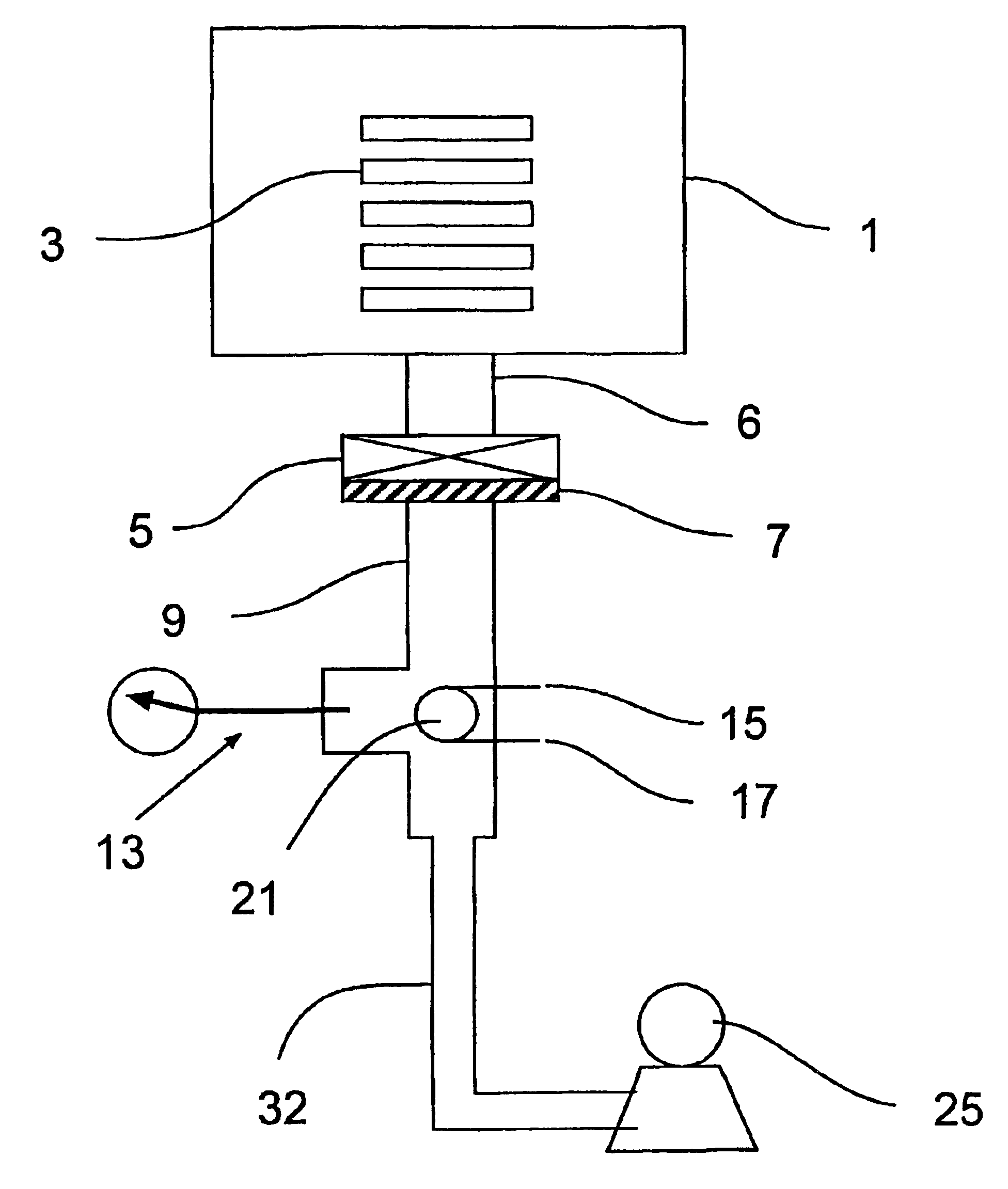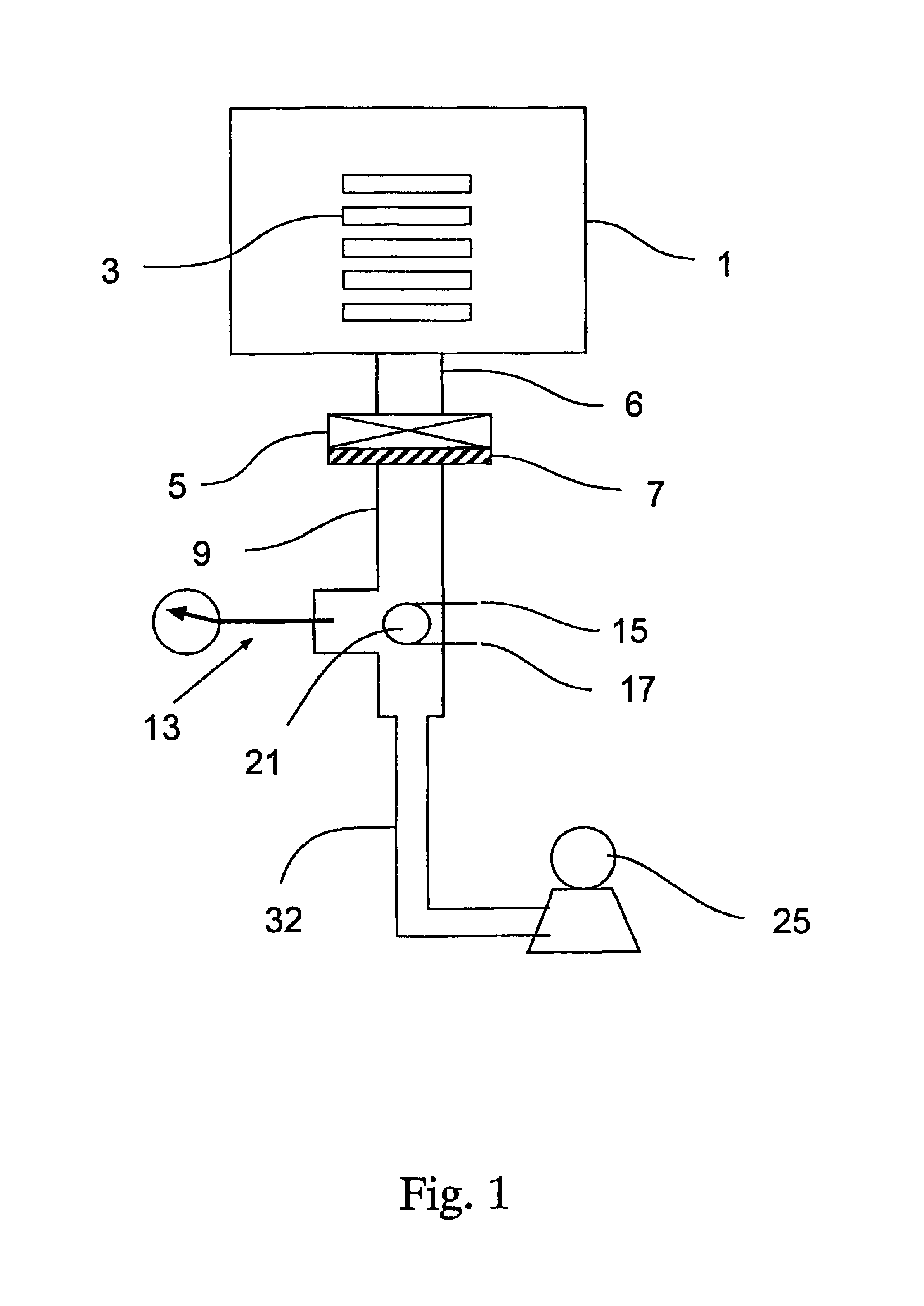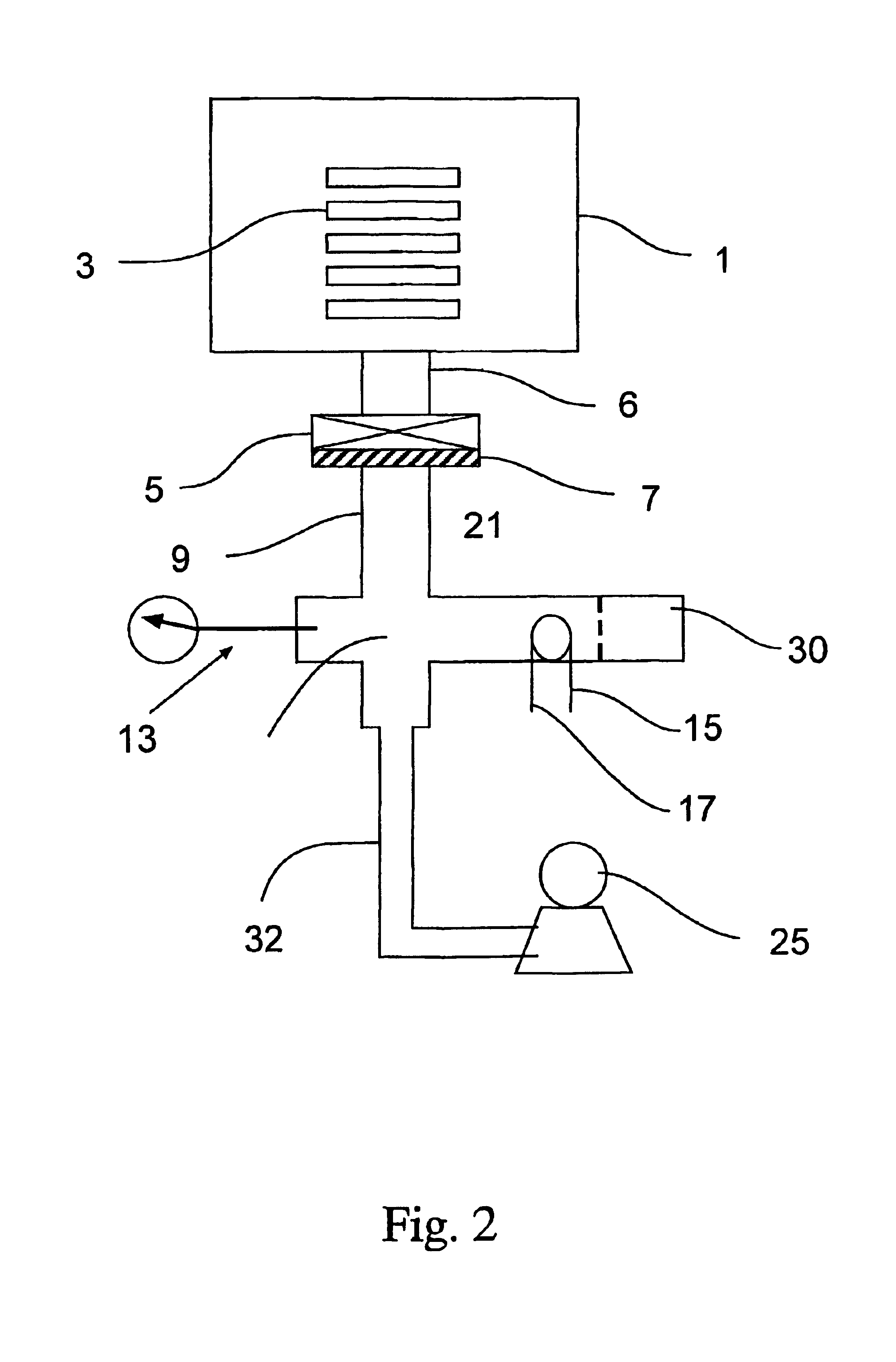Vacuum sensor
a vacuum sensor and sensor technology, applied in the field of vacuum sensors, can solve the problems of inability to achieve zero state of sensors located in the chamber, and high cost of devices, so as to simplify calibration, response and detection, and fast and reliable measurements proportional
- Summary
- Abstract
- Description
- Claims
- Application Information
AI Technical Summary
Benefits of technology
Problems solved by technology
Method used
Image
Examples
example 1
[0049]A test manifold, FIG. 3, was designed to illustrate the method and apparatus for the detection of moisture in a vacuum chamber. The manifold was designed to deliver prepared challenges of moisture into a vacuum chamber to simulate exposure of the chamber to atmospheric gases.
[0050]An 8 liter vessel, 90, fit with vacuum flanges was connected to isolation valve, 94, vent valve 92, and connected to a vacuum cross 96, from Varian Vacuum Corporation, Lexington, Mass. In the vacuum cross was mounted a 10 MHz aluminum quartz microbalance crystal from International Crystal, Oklahoma City, Okla. The crystal was mounted on the leads from a power vacuum feedthrough from Varian Vacuum, and connected by leads 106 and 108 to an oscillator circuit, not shown, from Millipore Corporation, Bedford, Mass. Also mounted in the vacuum cross was Pirani vacuum gauge, 98, from BOC Edwards, Murry Hill, N.J. The vacuum cross was connected to vacuum pump 102 by valve 100. The crystal was coated with a hy...
PUM
| Property | Measurement | Unit |
|---|---|---|
| pressures | aaaaa | aaaaa |
| diameter | aaaaa | aaaaa |
| pressure | aaaaa | aaaaa |
Abstract
Description
Claims
Application Information
 Login to View More
Login to View More - R&D
- Intellectual Property
- Life Sciences
- Materials
- Tech Scout
- Unparalleled Data Quality
- Higher Quality Content
- 60% Fewer Hallucinations
Browse by: Latest US Patents, China's latest patents, Technical Efficacy Thesaurus, Application Domain, Technology Topic, Popular Technical Reports.
© 2025 PatSnap. All rights reserved.Legal|Privacy policy|Modern Slavery Act Transparency Statement|Sitemap|About US| Contact US: help@patsnap.com



